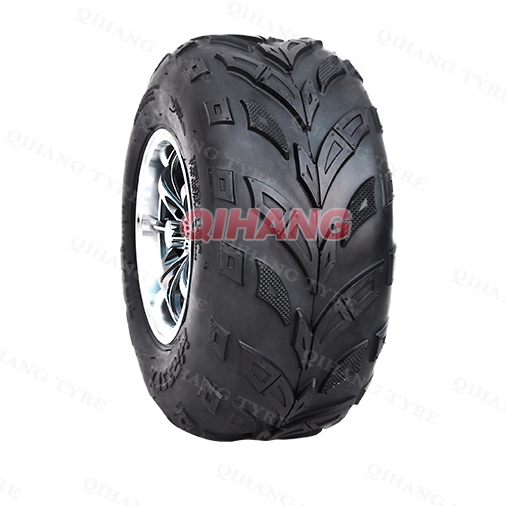To judge whether an industrial solid tire is normal, it is necessary to comprehensively consider multiple aspects such as appearance inspection, size and specifications, performance and other factors. If the tire is found to be abnormal or damaged, it should be replaced or repaired in time to ensure the safety and normal operation of the equipment or vehicle.
1. Appearance inspection
Tire integrity: Check whether the tire has obvious cracks, damage or signs of wear. Pay special attention to the tread, sidewall and bead of the tire, which are easily damaged.
Tread depth: Observe the wear of the tire pattern and ensure that the pattern depth is within the specified range. Each solid tire has a wear limit mark on the tread groove, which is generally about 2mm. When the tire is worn to or close to this limit, it should be replaced.
Color change: The color of the tire should be uniform and consistent, without abnormal discoloration. If the color of the tire changes significantly, it may be due to aging, chemical corrosion or material problems.
2. Size and specifications
Tire size: Check whether the size of the tire matches the requirements of the equipment or vehicle. The wrong tire size may cause installation difficulties, unstable driving or damage to the equipment.
Rim fit: The fit of the tire to the rim should be good, without looseness or falling off. Make sure the tire is firmly installed on the rim to avoid falling off or damage during driving.
3. Performance
Driving stability: During driving, the tire should remain stable without swaying or jumping. If driving instability occurs, it may be caused by unbalanced tires, improper installation or damage.
Wear resistance: The tire should have sufficient wear resistance to withstand long-term use and wear. If the tire wears too quickly, it may be caused by poor material quality, poor use conditions or improper maintenance.
Puncture resistance: The tire should have a certain puncture resistance to cope with sharp objects in the working environment. If the tire is frequently punctured or damaged, it may be caused by insufficient material strength or a poor working environment.
4. Other factors
Production date and shelf life: Check the production date and shelf life of the tire to ensure that the tire is used within the validity period. Expired tires may have performance degradation due to material aging.
Brand and quality certification: Choose tires from well-known brands and check whether they have passed relevant quality certifications. Tires from well-known brands and quality certifications usually have better quality and performance guarantees.


